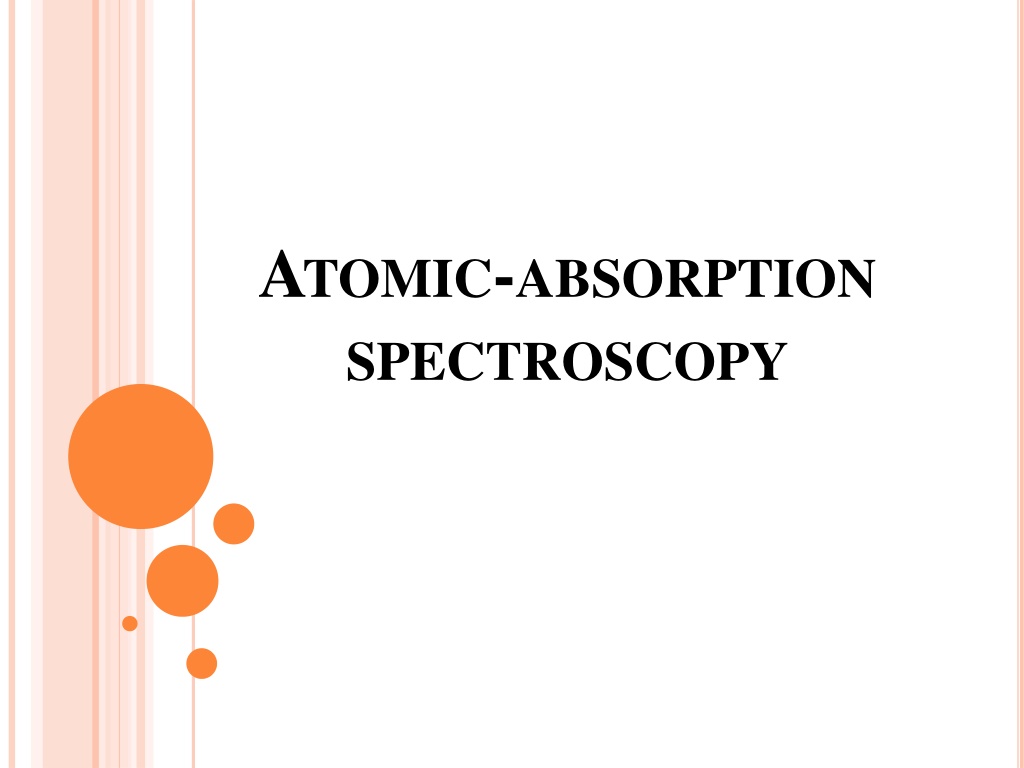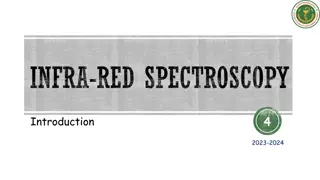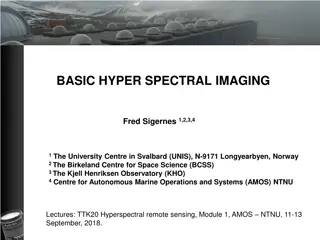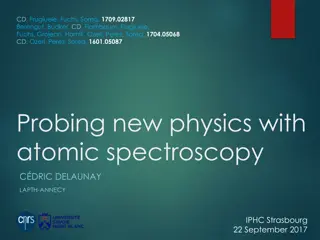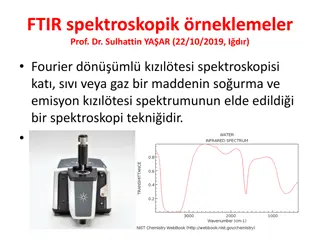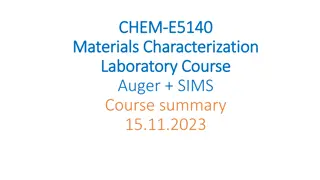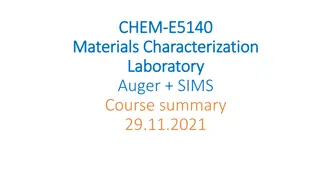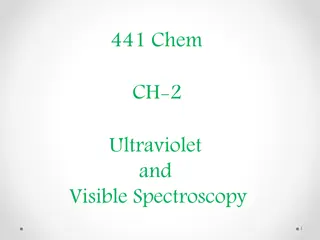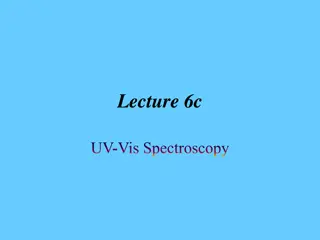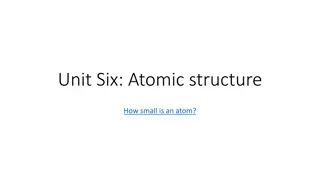Understanding Atomic Absorption Spectroscopy in Analytical Chemistry
Atomic absorption spectroscopy (AAS) is a valuable technique for determining metal concentrations in samples. This method involves the absorption of light to measure gas-phase atoms, requiring steps like desolvation, vaporization, and volatilization to convert samples into atomic gas. The process utilizes a hollow cathode lamp as the light source for exciting metal atoms, with atomizers such as flames or graphite furnaces facilitating the analysis of ions or atoms in the gas phase. AAS is crucial in analyzing over 62 different metals and is widely used in various research and industrial applications.
Download Presentation

Please find below an Image/Link to download the presentation.
The content on the website is provided AS IS for your information and personal use only. It may not be sold, licensed, or shared on other websites without obtaining consent from the author. Download presentation by click this link. If you encounter any issues during the download, it is possible that the publisher has removed the file from their server.
E N D
Presentation Transcript
ATOMIC-ABSORPTION SPECTROSCOPY
Introduction In analytical chemistry, Atomic absorption spectroscopy (AAS) is a technique for determining the concentration of a particular metal element in a sample (e.g.Fe, Cu, Al, Pb, Ca, Zn). Atomic absorption spectroscopy can be used to analyze the concentration of over 62 different metals in a solution.
TECHNIQUE Atomic-absorption (AA) spectroscopy uses the absorption of light to measure the concentration of gas-phase atoms. Since samples are usually liquids or solids, the analyte atoms must be vaporized or atomized in a flame or graphite furnace.
STEPS Three steps are involved in turning a liquid sample into an atomic gas: Desolvation the liquid solvent is evaporated, and the dry sample remains. Vaporisation the solid sample vaporises to a gas. Volatilization the compounds making up the sample are broken into free atoms.
Light Source: Hollow Cathode Lamp http://elchem.kaist.ac.kr/vt/chem-ed/optics/sources/graphics/lamp-hcl.gif The light that is focused into the flame is produced by a hollow cathode lamp. Inside the lamp is a cylindrical metal cathode containing the metal for excitation, and an anode. When a voltage is applied across the anode and cathode, the metal atoms in the cathode are excited into producing light with a certain emission spectrum.
The type of hollow cathode tube depends on the metal being analyzed. For analyzing the concentration of copper in an ore, a copper cathode tube would be used, and likewise for any other metal being analyzed. The electrons of the atoms in the flame can be promoted to higher orbitals for an instant by absorbing a set quantity of energy (a quantum).
Atomizer AA spectroscopy requires that the analyte atoms be in the gas phase. Ions or atoms in a sample must undergo desolvation and vaporization in a high-temperature source such as a flame or graphite furnace. Flame AA can only analyze solutions, while graphite furnace AA can accept solutions, slurries, or solid samples.
Flame AA uses a slot type burner to increase the path length, and therefore to increase the total absorbance (see Beer-Lambert law). Sample solutions are usually aspirated with the gas flow into a nebulizing/mixing chamber to form small droplets before entering the flame.
FLAME Different temperatures required for different elements Air-Acetylene flame Preferred flame for 35 elements Temperature of 2300 C Nitrous Oxide-Acetylene flame Temperature of 2900 C
The graphite furnace has several advantages over a flame. It is a much more efficient atomizer than a flame and it can directly accept very small absolute quantities of sample. Samples are placed directly in the graphite furnace and the furnace is electrically heated in several steps to dry the sample, ash organic matter, and vaporize the analyte atoms. The gas-phase atoms absorb ultraviolet or visible light and make transitions to higher electronic energy levels.
a flame atomic-absorption spectrometer http://elchem.kaist.ac.kr/vt/chem-ed/spec/atomic/graphics/aa.jpg a graphite-furnace atomic-absorption spectrometer: http://elchem.kaist.ac.kr/vt/chem-ed/spec/atomic/graphics/gfaa.jpg
Monochromator Which is set to isolate the radiation at the specified wavelength and travels into the detector.
DETECTOR Photo multiplier tube Extremely sensitive Can detect single photons Measures the intensity of the beam of light. When some of the light is absorbed by metal, the beam's intensity is reduced. The detector records that reduction as absorption. That absorption is shown on output device by the data system
GETTINGA CONCENTRATION Flame Measures absorbance proportional to the ______________ of the sample Analysis in the mg/L range (ppm) Graphite Furnace Measures an absorbance peak with an area proportional to _______ of the sample Analysis in the mg/L range (ppb) concentration mass
We can find the concentrations of a sample running a series of calibration standards through the instrument. By plotting the absorption versus the concentrations of the standards, a calibration curve can be plotted. We can then look at the absorption for a sample solution and use the calibration curves to determine the concentration of a sample.
